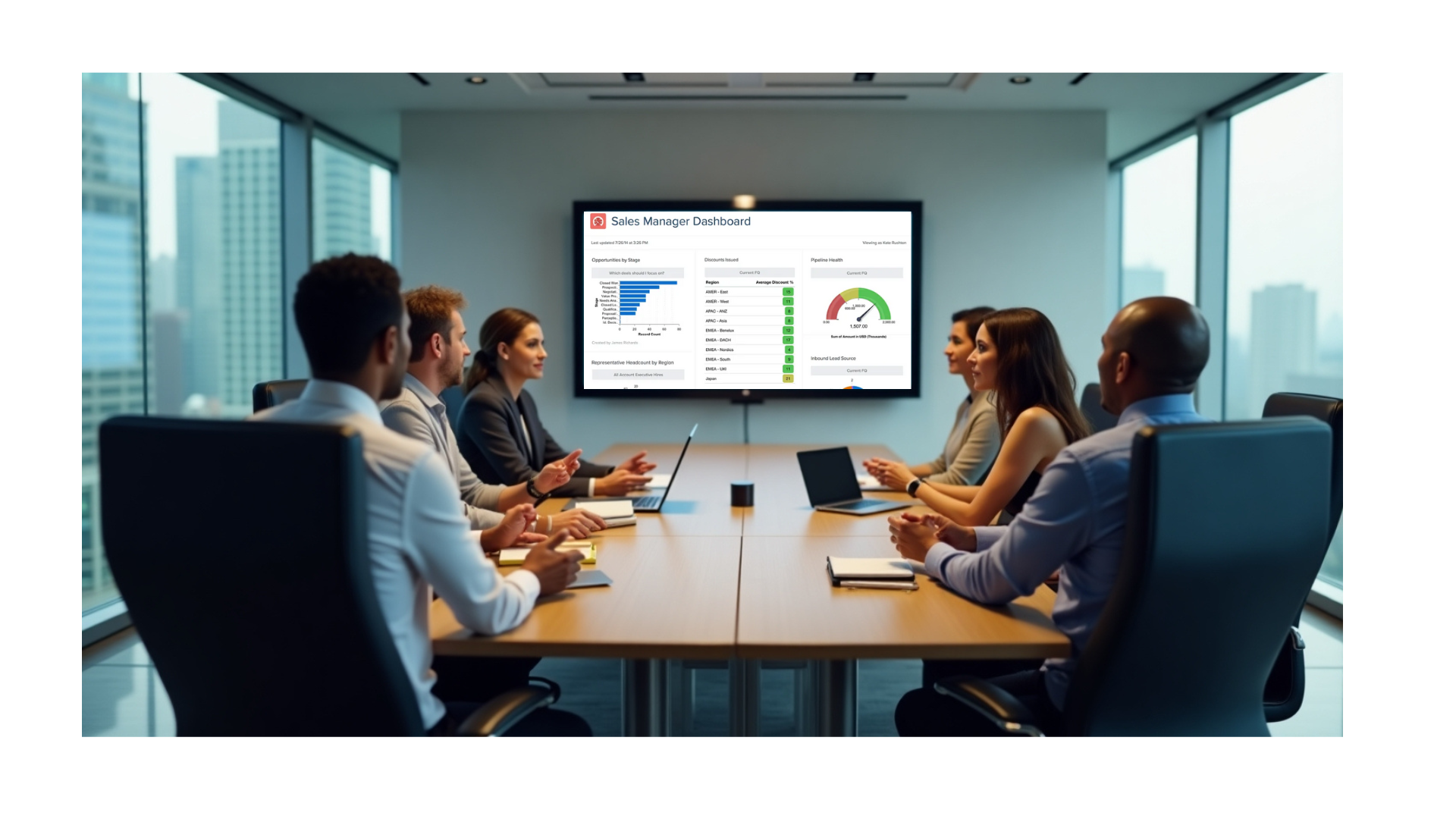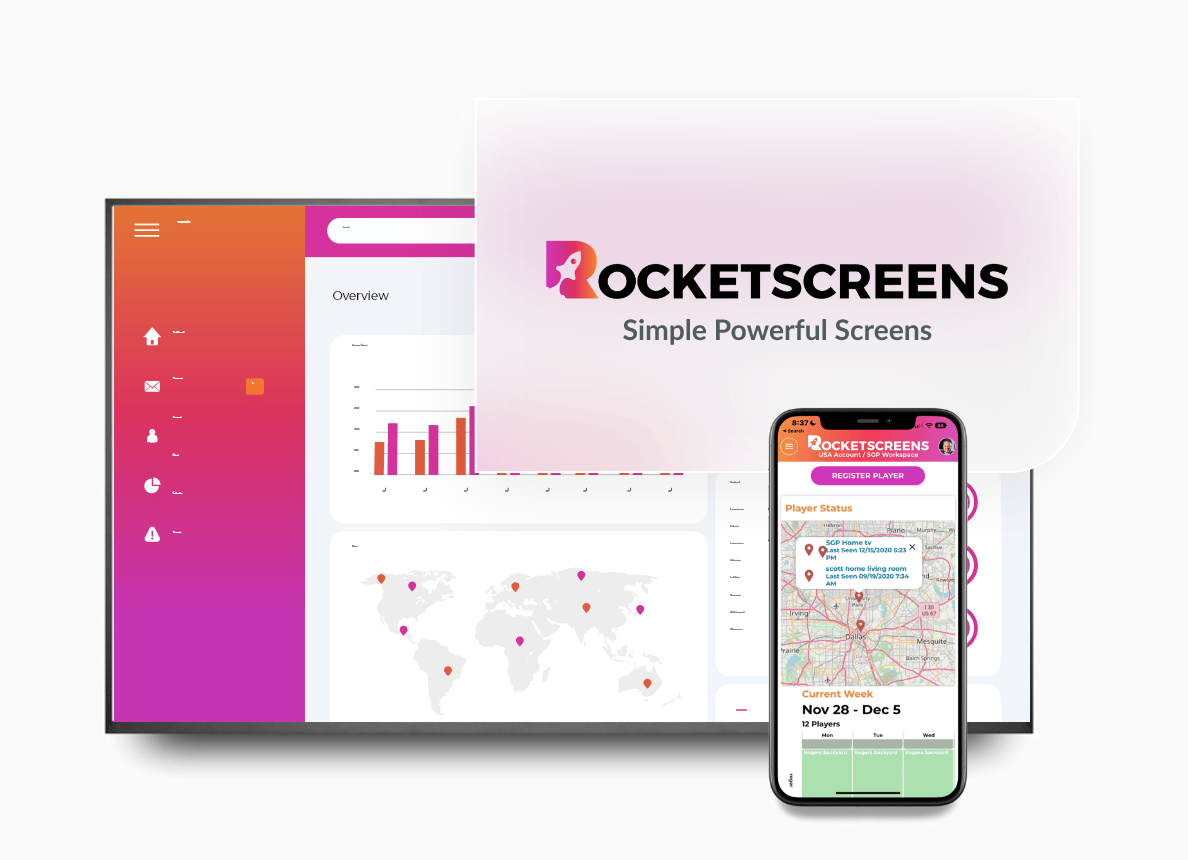
In today’s fast-paced business environment, the way organizations communicate is evolving rapidly. As companies search for innovative, engaging, and sustainable communication methods, digital signage has emerged as a powerful alternative to traditional communication methods. This article will explore how digital signage compares to traditional methods across three critical dimensions: cost analysis, efficiency, and environmental impact. Whether you are considering an upgrade to dynamic office displays or are curious about the broader debate of digital vs traditional communication, this comprehensive guide will help you understand the benefits and challenges associated with each approach.
Introduction
The debate between digital signage and traditional communication methods is more relevant than ever. Businesses have long relied on printed posters, static bulletin boards, and other conventional media to convey information. However, advancements in digital technology have introduced more flexible and interactive solutions that are quickly reshaping the communication landscape. At RocketScreens, we understand that effective communication is the cornerstone of success. Our digital signage platform securely connects to over 100 applications, enabling organizations to deliver powerful, dynamic information wherever it’s needed.
In this article, we break down the comparison between digital signage and traditional communication methods into three essential components:
- Cost Analysis – Evaluating initial investments, ongoing expenses, and overall return on investment (ROI).
- Efficiency – Examining how quickly and effectively information can be updated, disseminated, and consumed.
- Environmental Impact – Assessing the sustainability of each method, from resource consumption to waste generation.
Let’s delve into each of these factors to see why the transition to digital methods, including modern office displays, may be a strategic move for your organization.
Understanding the Communication Methods
Before diving into a detailed analysis, it’s important to understand what each method entails.
What is Digital Signage?
Digital signage refers to the use of electronic displays—such as LED screens, LCD panels, and projection systems—to broadcast multimedia content in real time. These displays can be updated remotely and are capable of showcasing videos, animations, real-time data, and interactive content. Modern digital signage solutions, like those offered by RocketScreens, provide seamless integration with various applications and data sources to ensure that the content remains fresh, engaging, and relevant.
What are Traditional Communication Methods?
Traditional communication methods typically involve physical media. This includes printed posters, flyers, bulletin boards, and static displays that rely on manual updates. These methods have been widely used for decades, and while they have the advantage of simplicity, they often lack the dynamic, engaging features offered by modern digital solutions.
Cost Analysis
One of the most critical factors for any business decision is cost. In comparing digital signage and traditional communication, several cost-related factors come into play: upfront investment, maintenance, scalability, and long-term return on investment (ROI).
Digital Signage Cost Analysis
- Initial Investment
Digital signage typically requires a higher initial investment than traditional methods. The costs include:
- Hardware: High-quality screens, mounts, and digital players.
- Software: Licensing fees for content management systems.
- Installation: Professional installation to ensure optimal placement and connectivity.
- Maintenance and Operational Costs
Digital signage offers significant long-term savings:
- Remote Management: Updates and maintenance can be done remotely, reducing the need for physical interventions.
- Content Scheduling: Automated scheduling software minimizes the labor required for content updates.
- Durability: Digital displays are designed for continuous operation, often lasting for years with minimal upkeep.
- Scalability and Flexibility
Digital signage is inherently scalable:
- Easy Expansion: Adding more screens or upgrading existing ones is typically less cumbersome than printing new materials.
- Content Versatility: One digital sign can replace multiple traditional signs, thereby spreading the cost across various locations and departments.
- Dynamic Content: The ability to change content in real time means you only pay for what is needed when it’s needed, optimizing your communication budget.
- Return on Investment (ROI)
The enhanced engagement, reduced operational costs, and increased flexibility of digital signage often result in a higher ROI over time. Businesses can see faster payback periods compared to the recurring expenses of traditional print media.
Traditional Communication Methods Cost Analysis
- Initial and Recurring Expenses
Traditional methods may have lower upfront costs, but they often incur significant recurring expenses:
- Printing Costs: Regular printing of posters, flyers, and other materials.
- Installation and Labor: Costs associated with manually placing and updating content.
- Material Costs: Paper, ink, and other materials that need to be replenished frequently.
- Lack of Flexibility
Once traditional materials are printed and installed, any changes require reprinting or physically updating the content, which can be time-consuming and expensive. This rigidity makes traditional methods less responsive to rapidly changing information needs. - Hidden Costs
There are also hidden costs associated with traditional methods:
- Waste Management: Disposal of outdated or damaged materials adds to operational expenses.
- Lost Opportunities: Delays in updating content may result in missed opportunities for timely communication, impacting customer engagement and employee productivity.
Comparing the Two: Digital vs Traditional Communication
When you compare digital vs traditional communication in terms of cost, digital signage offers several distinct advantages:
Cost Efficiency Over Time: Although the initial setup for digital signage might be higher, the long-term savings in maintenance, labor, and material costs make it a cost-effective solution.
Better ROI: The dynamic and flexible nature of digital signage leads to improved ROI, as content can be updated in real time without additional printing or installation costs.
Budget-Friendly Scalability: Expanding digital signage networks is more cost-effective than scaling up traditional print media across multiple locations.
Key Takeaways on Cost Analysis
- Upfront vs Long-Term: Digital signage requires higher upfront investment but offers substantial long-term savings.
- Operational Efficiency: Remote management and automated updates minimize ongoing costs.
- Waste Reduction: Lower material costs and reduced waste generation contribute to overall cost efficiency.
Efficiency: Speed, Flexibility, and Engagement
Efficiency in communication is essential, especially in environments where timely and accurate information dissemination is crucial. Both digital signage and traditional methods have their own efficiency profiles.
Efficiency of Digital Signage
- Real-Time Updates
One of the major strengths of digital signage is its ability to update content in real time. Whether it’s news, weather updates, or company announcements, digital displays can instantly reflect new information. This immediacy is a significant advantage over traditional methods, where updates can be delayed by printing and distribution schedules. - Interactivity and Engagement
Digital signage can be interactive, allowing viewers to engage with the content. Touchscreen displays, QR codes, and interactive kiosks make it possible for users to navigate through information, access additional data, or even participate in surveys and promotions. This level of engagement is difficult to achieve with static, traditional communication methods. - Dynamic Content Scheduling
With digital signage, content can be scheduled to run at optimal times for maximum impact. Whether targeting employees in an office or customers in a retail environment, businesses can tailor the displayed messages based on audience behavior and time of day. - Ease of Integration
Modern digital signage systems integrate with various applications, social media feeds, and data analytics tools. This integration not only streamlines content management but also ensures that the information remains relevant and data-driven. For example, integrating live social media updates into digital displays can keep audiences engaged with current trends and promotions. - Scalability and Flexibility
Digital signage networks can easily be expanded or modified. Adding a new screen to a network is as simple as connecting it to the system and uploading the relevant content. This scalability makes digital signage an excellent solution for growing businesses or organizations with multiple locations.
Efficiency of Traditional Communication Methods
- Static and Inflexible
Traditional methods, such as printed posters or bulletin boards, are static by nature. Once created, these materials cannot be updated without reprinting, making them less responsive to changes in information or audience needs. - Labor-Intensive Processes
Updating traditional communication channels often requires significant manual effort. From designing new materials to physically replacing old ones, the process is time-consuming and prone to human error. This inefficiency can delay the communication process and reduce overall effectiveness. - Limited Interactivity
Traditional communication is inherently one-way. Without the ability to interact or provide feedback, these methods fall short in engaging modern audiences. The lack of interactivity means that once the message is delivered, there is little opportunity for further engagement or data collection.
Enhancing Communication with Modern Office Displays
Modern office displays are a prime example of how digital signage can transform workplace communication. With features such as:
- Real-Time Alerts: Immediate updates on company news, emergency alerts, and daily schedules.
- Employee Engagement: Interactive elements that allow employees to access training materials, company announcements, and performance dashboards.
- Meeting Room Management: Dynamic displays that show meeting schedules, room availability, and upcoming events.
These digital office displays not only improve internal communication but also enhance overall operational efficiency. By streamlining information flow, companies can foster a more connected, informed, and productive work environment.
Comparative Efficiency Overview
When comparing the efficiency of digital vs traditional communication methods, the advantages of digital signage are clear:
- Speed: Instant updates versus delayed print cycles.
- Interactivity: Engaging, interactive displays versus static content.
- Flexibility: Easily adjustable content and schedules versus labor-intensive manual updates.
- Integration: Seamless incorporation of real-time data and social media feeds.
Efficiency Summary
Digital Signage: Offers real-time updates, interactive engagement, and scalable integration that significantly enhances overall communication efficiency.
Traditional Methods: Although reliable, they are less agile, more labor-intensive, and lack interactive capabilities.
Environmental Impact: Sustainability in Communication
Sustainability is no longer just a buzzword—it’s a necessity for businesses looking to minimize their environmental footprint. Both digital signage and traditional communication methods impact the environment, but the differences are substantial.
Environmental Impact of Digital Signage
- Reduced Material Waste
One of the primary environmental benefits of digital signage is the significant reduction in paper and printing materials. Traditional methods often result in high volumes of paper waste, including obsolete materials that must be disposed of responsibly. Digital signage eliminates the need for physical copies, thereby reducing waste. - Energy Consumption and Efficiency
While digital displays do consume energy, modern LED and LCD technologies are designed for energy efficiency. Many digital signage solutions come with power-saving features such as automatic brightness adjustments, motion sensors, and scheduled sleep modes to minimize energy use during off-peak hours. - Longevity and Durability
Digital displays are built for long-term use. With proper maintenance, they can operate for several years without needing frequent replacement. This durability reduces the overall environmental impact associated with frequent disposal and manufacturing of new traditional media. - Sustainable Integration
Digital signage can integrate with environmental sensors and sustainability dashboards. This integration not only supports green initiatives by monitoring energy usage and emissions but also helps organizations make informed decisions to further reduce their carbon footprint.
Environmental Impact of Traditional Communication Methods
- High Paper Consumption
Traditional communication methods are heavily reliant on paper, which contributes to deforestation, energy consumption during production, and increased waste. The continuous need to print new materials adds up to a significant environmental burden over time. - Chemical Use in Printing
The printing process involves various chemicals and inks, many of which can be harmful to the environment. Wastewater from printing facilities and the improper disposal of used materials can lead to environmental pollution. - Disposal and Recycling Challenges
Once printed materials are no longer needed, they often end up in landfills. While recycling is an option, the process is not always efficient, and a considerable amount of waste still escapes proper recycling channels.
Comparative Environmental Impact
When comparing the environmental impact of digital vs traditional communication, the advantages of digital signage become evident:
- Material Reduction: Digital signage virtually eliminates paper waste.
- Energy Efficiency: Modern digital displays are engineered to minimize energy consumption.
- Sustainability: The longevity of digital signage reduces the need for frequent replacements and lowers the overall carbon footprint.
Environmental Impact Summary
Digital Signage: Promotes sustainability through reduced material waste, energy-efficient technologies, and long-term durability.
Traditional Methods: Tend to contribute to waste, higher energy and resource consumption, and environmental pollution.
The Future of Communication: Integrating Digital Signage
As businesses increasingly pivot toward digital transformation, the debate of digital vs traditional communication continues to evolve. Here are some key trends and benefits driving the future of office displays and communication:
- Real-Time Analytics and Adaptability
Modern digital signage platforms offer advanced analytics that track viewer engagement, content effectiveness, and real-time interactions. These insights enable businesses to fine-tune their communication strategies, ensuring that messages resonate with the target audience. - Enhanced User Experience
Interactive digital displays are designed to capture attention and encourage engagement. From customizable content to interactive kiosks, digital signage provides a more engaging experience compared to static traditional media. This is particularly important in high-traffic areas like offices, retail environments, and public spaces. - Integration with Mobile and Social Media
Digital signage can seamlessly integrate with mobile apps and social media platforms. This integration not only broadens the reach of your messages but also creates a unified communication strategy that bridges the gap between online and offline engagement. - Improved Crisis Communication
In emergency situations, the ability to quickly update and disseminate accurate information can save lives. Digital signage offers unparalleled efficiency in delivering timely updates, whereas traditional methods may lag in fast-changing circumstances. - Cost-Effective Scalability for Growing Businesses
For companies looking to expand their communication networks, digital signage provides a scalable solution that is far more cost-effective than reprinting and redistributing traditional materials across multiple locations. This is particularly relevant for organizations with multiple offices or retail outlets that rely on consistent messaging across all branches.
Practical Implementation: Transitioning to Digital Signage
Transitioning from traditional methods to digital signage involves several practical steps. Here’s how businesses can make the switch effectively:
- Evaluate Your Communication Needs
Assess current methods: Determine what works and what needs improvement.
Identify goals: Whether it’s improved engagement, cost savings, or environmental sustainability, clearly define your objectives. - Invest in Quality Hardware and Software
Select reliable digital signage solutions: Choose platforms that offer secure connections, remote management capabilities, and integration with your existing applications.
Plan for scalability: Ensure the system can grow with your business needs, supporting additional screens or locations as required. - Design Engaging Content
Utilize interactive features: Incorporate touchscreens, video content, and dynamic graphics to capture attention.
Leverage real-time updates: Keep your audience informed with live data feeds and time-sensitive information. - Monitor and Optimize Performance
Track engagement: Use analytics tools to measure how audiences interact with your digital signage.
Refine content: Regularly update and tweak content based on performance data to maximize impact. - Promote Sustainability Initiatives
Highlight green practices: Emphasize the environmental benefits of digital signage in your corporate communications.
Engage stakeholders: Share success stories about how your transition to digital has reduced waste and improved efficiency.
Conclusion
The evolution of communication is clear: as businesses weigh the advantages of digital vs traditional communication methods, the evidence increasingly favors digital signage. From a cost perspective, digital signage offers long-term savings and a better return on investment despite higher initial costs. In terms of efficiency, the ability to update content in real time, engage audiences interactively, and integrate with other digital platforms sets digital signage apart from static traditional methods. Finally, when it comes to environmental impact, digital signage is far more sustainable—reducing waste, conserving resources, and lowering the overall carbon footprint.
For businesses seeking to upgrade their communication strategy, especially those in modern office environments, investing in dynamic office displays is a step toward improved engagement, cost efficiency, and sustainability. As the communication landscape continues to evolve, embracing digital signage not only meets the demands of today’s fast-paced world but also paves the way for a more responsive, efficient, and environmentally friendly future.
RocketScreens is proud to support organizations in their journey toward a more dynamic communication strategy. With our simple digital signage platform that securely connects to over 100 applications, you can rest assured that your message is delivered powerfully, consistently, and sustainably—no matter where your audience is.





